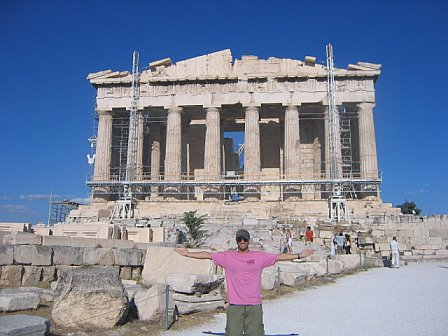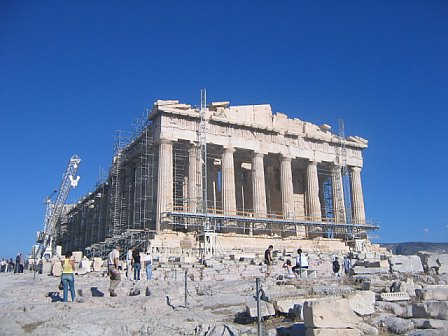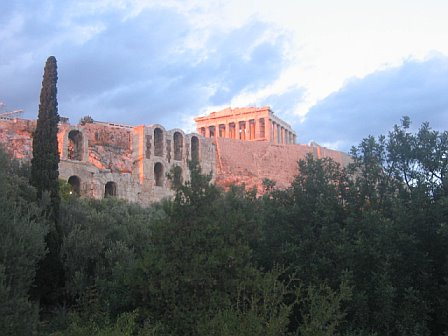
The Parthenon is a temple of the Greek goddess Athena built in the 5th century BC on the Acropolis of Athens. It is the most important surviving building of Classical Greece, generally considered to be the culmination of the development of the Doric order. Its decorative sculptures are considered one of the high points of Greek art. The Parthenon is regarded as an enduring symbol of ancient Greece and of Athenian democracy, and is one of the world’s greatest cultural monuments and is the posterchild for the UNESCO World Heritage Sites.
The Parthenon replaced an older temple of Athena, called the Pre-Parthenon or Older Parthenon, that was destroyed in the Persian invasion of 480 BC. Like most Greek temples, the Parthenon was used as a treasury, and for a time served as the treasury of the Delian League, which later became the Athenian Empire. In the 6th century AD, the Parthenon was converted into a Christian church dedicated to the Virgin. After the Ottoman conquest, it was converted into a mosque in the early 1460s.

In 1687, an Ottoman ammunition dump inside the building was ignited by Venetian bombardment. The resulting explosion severely damaged the Parthenon and its sculptures. In 1806, Thomas Bruce, 7th Earl of Elgin removed some of the surviving sculptures, with Ottoman permission. These sculptures, now known as the Elgin or Parthenon Marbles, were sold in 1816 to the British Museum in London, where they are now proudly displayed. The Greek government is committed to the return of the sculptures to Greece, so far with no success.
Today the Parthenon Marbles that Earl of Elgin removed are in the British Museum. Other sculptures from the Parthenon are now in the Louvre Museum in Paris, in Copenhagen, and elsewhere, but most of the remainder are in Athens, in the Acropolis Museum which still stands below ground level, a few metres to the south-east of the Parthenon, but will be soon transferred to a new building. A few can still be seen on the building itself.
The Greek government has been campaigning since 1983 for the British Museum sculptures to be returned to Greece. The British Museum has steadfastly refused to return the sculptures and successive British governments have been unwilling to force the Museum to do so. Nevertheless, talks between senior representatives from Greek and British cultural ministries, and their legal advisors took place in London in May 2007. These were the first serious negotiations for several years, and there are hopes that the two sides may move a step closer to a resolution.

The Greek Ministry of Culture is currently carrying out a program of restoration and reconstruction. The restoration of the Parthenon has been going on for years and has no real signs of slowing down. It was under restoration and reconstruction when I visited in 1998 and it is still under the same seemingly idol restoration. It is still an amazing cultural icon and well worth a look. I only wish the Greeks could move as quickly to restore the Parthenon as they did to build a new Olympic Stadium and other venues for the 2004 Summer Olympics, which were the most expensive of all time and lost the most money of any Olympiad.












The Greeks are on Africa time. I was there in the mid 80s and they wer restoring it and it looked very similar to your pictures with all the weird looking scaffolding
Wow, that’s a really pink shirt!
Some guys can wear pink and some can’t-I pull it off wonderfully
You’re lucky the fashion police didn’t get you for wearing a pink shirt with green pants. I’ve been reading your blog every day that you’ve posted …I want to see more pics of your trip! Stop leaving your readers hanging!
They’re shorts Lulu, besides people wear pink in Europe-it’s trendy-haha…and please never mention the fashion police on my site again…this isn’t the E channel.
What Jill said. I was there in 1987 and it looked just the same…